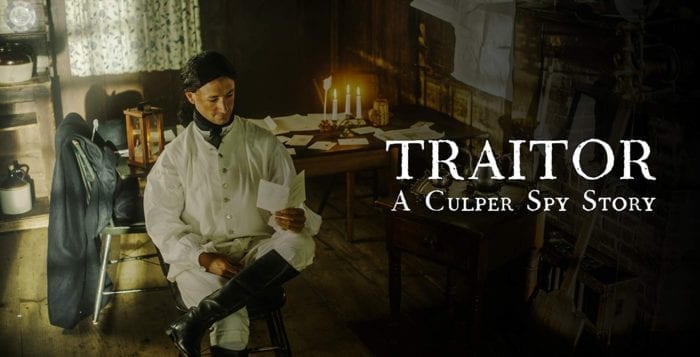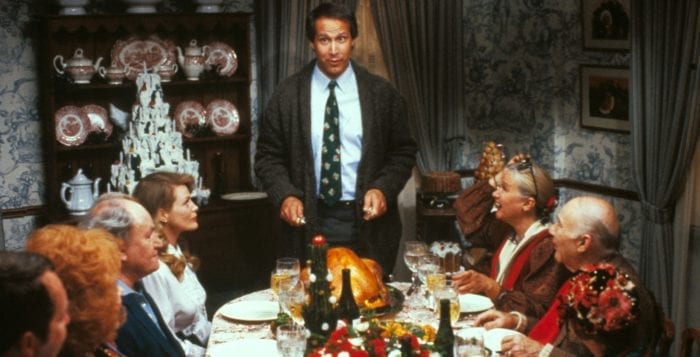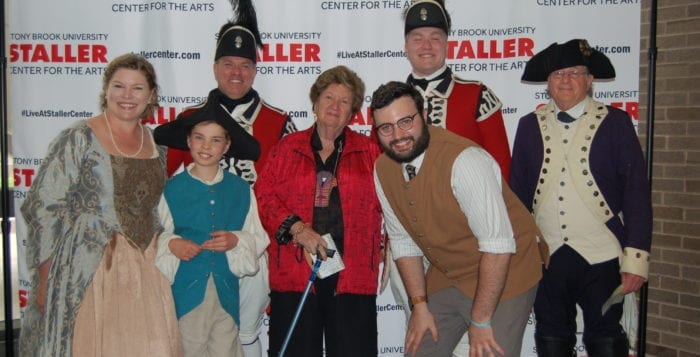By Leah Dunaief

Last week, we took our first major film, “One Life to Give,” to an out-of-town showing. An audience of more than 100 history lovers and friends in Philadelphia watched the dramatic story of the friendship of Nathan Hale, Benjamin Tallmadge and the beginning of the Culper Spy Ring. We were impressed by how interested the Philadelphians were in a tale of George Washington’s intelligence service centered in Setauket, Long Island. This is, of course, an authentic narrative of the Revolutionary War and of the founding of America, so I guess we needn’t have been surprised at its broad appeal.
In addition, we screened for the first time the almost completed sequel, “Traitor.” This story picks up some five years later, in 1780, and tells of the capture of John André, British spymaster, by the Patriots, and his fate at the hands of, ironically, Tallmadge. He is now a major in the Continental Army and has been tortured with guilt during the past four years since his Yale buddy, Hale, was caught and hanged as a spy. It was Tallmadge who so earnestly persuaded Hale to join the war effort, and we know of Hale’s end at the hands of the British.
 Now the shoe is on the other foot.
Now the shoe is on the other foot.
André has been caught with detailed maps of West Point, the fort that the British are lusting to capture so as to have free rein in the Hudson River, dividing New England from the rest of the colonies. The fort is under the command of Patriot general, Benedict Arnold, who is about to become a turncoat, hence his dealings with André.
The sequel is, if anything, even better than the original film. And mine is not the only such verdict. Here are some comments emailed to us by the members of the audience after the screening of both films in succession:
• “Thank you so much for including me in the extraordinary film screening last night. … I was not expecting to see something so professional and polished on every level: script, acting, photography, sound, production and, yes, gory makeup! It is also wonderful to see what an incredible family [my grandson, Benji, is the director] and community production this has been — pulling in all sorts of expertise, including [Bev Tyler, historian of the Three Village Historical Society, who accompanied us to Philadelphia]. … Congratulations to Benji [Michael Tessler, Andrew Stavis and the rest of the team]. … Please let them know how much I enjoyed it. And we’ll all be able to say, ‘We knew [them] when … .’”
• “Wow, what a great night. The films were great, great turnout.”
• “What a joy to be there, we really learned from the movie.”
• “Wonderful event! You should be proud. The movies were great. I learned a lot. I’m excited to share new stuff with my students.”
• “What a treat to attend the viewing … last night. Thank you for including us.”
• “HUGE congratulations from me! Wow, I really enjoyed the movies.”
• “Thanks for including us in the movie viewing. An impressive undertaking with fantastic results!”
• “Had a great time at the movies. We were really impressed!”
And this from an old friend who has followed Benji’s development:
• “Thanks for inviting me to witness [this] fabulous work. … [Benji’s] enthusiasm of his early years with a camera is super matched by his gifts of eye, mind and devotion to story and characters. It’s a little humbling to think that simply giving him a theater with a screen in his early years [he directed films as a teenager] encouraged him to continue creating worlds in film.”
• “I was so impressed with the level of sophistication given that [they] are young filmmaker[s].”
As you can tell, it was a successful and fun evening. We look forward to screening the two films, one right after the other, here in late spring. All will be welcome. Please stay tuned.
















